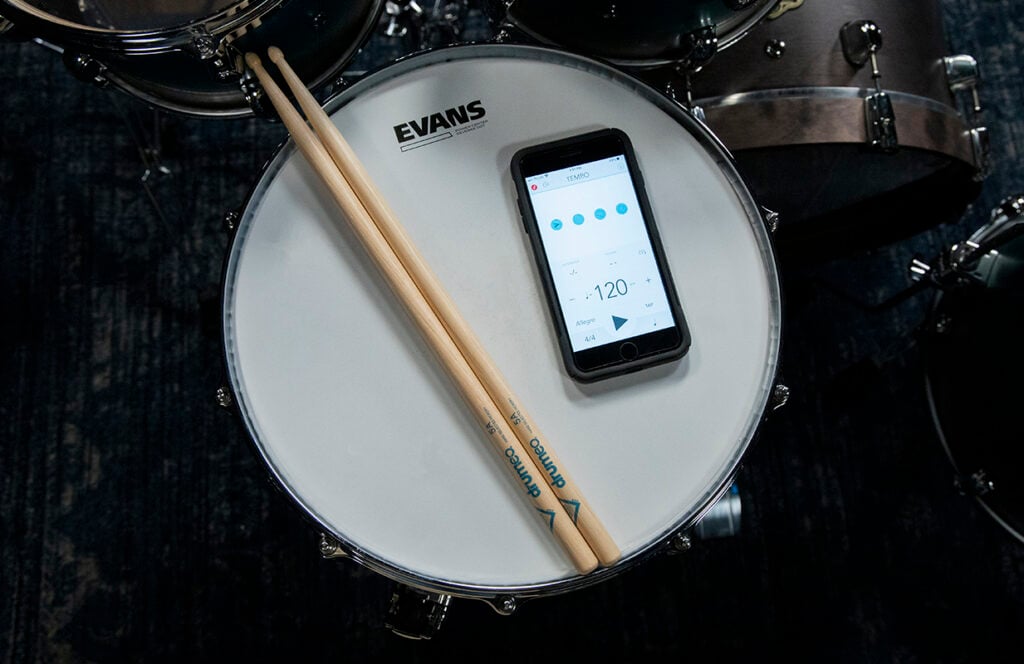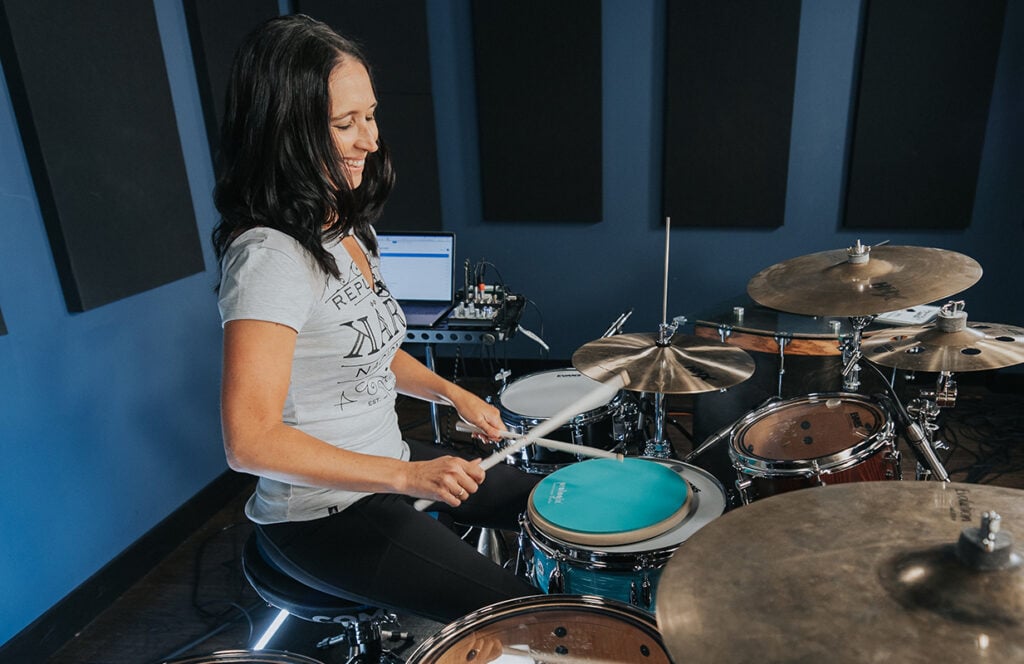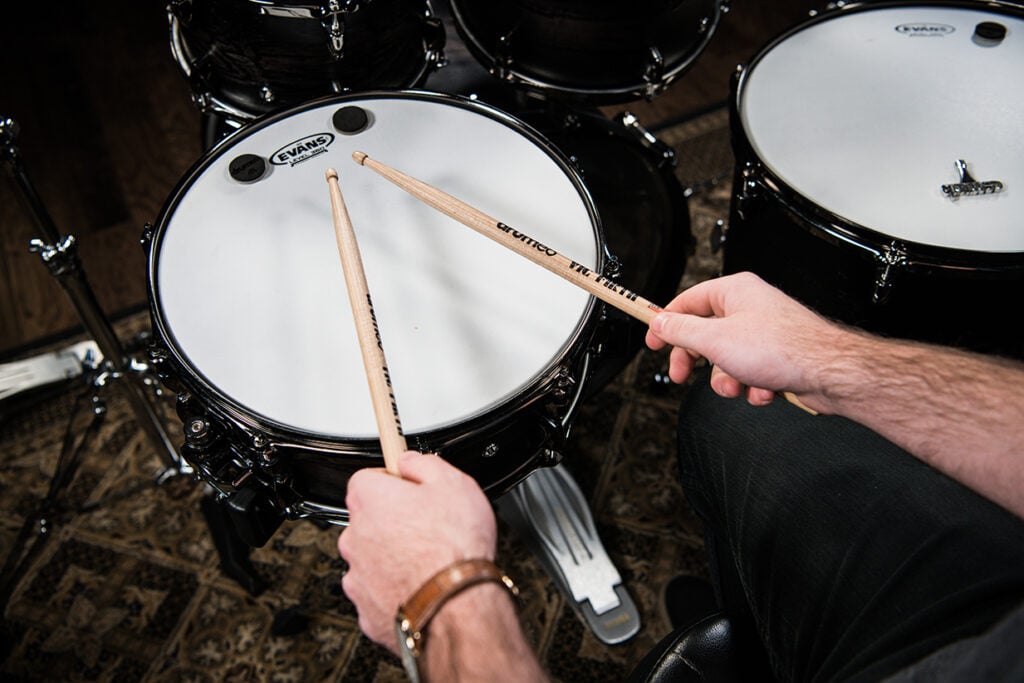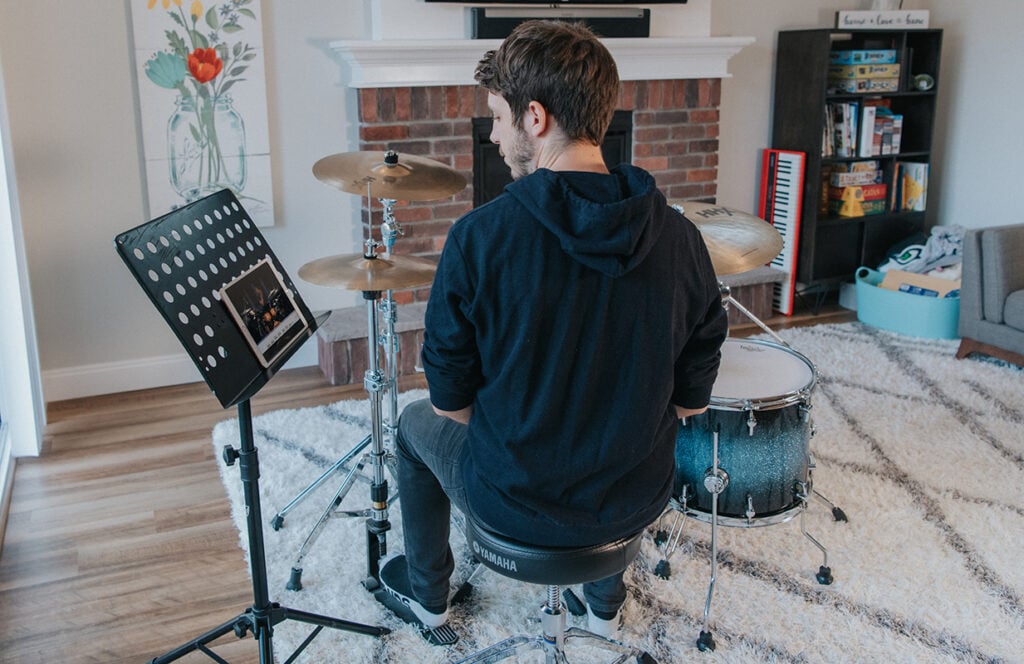The Lesson 25 is a drum rudiment that’s based around three alternating 16th notes and starts with a drag. It’s a catchy pattern that’s great for creative solos and drum fills and is handy for building stick control.

While most rudiments are named for their patterns or how they sound, the lesson 25 is an outlier. It comes from the 25th lesson in an 1869 rudiment book (Drum and Fife Instructor) and is one of the original 26 drum rudiments.
The lesson 25 consists of three alternating 16th notes. Every three-note grouping starts with a drag, and the third note has an accent.
If you know how to play the single stroke roll and the drag, you should be able to get a hang of this rudiment pretty quickly. The lesson 25 also isn’t that far off from the single drag tap.
There’s no rhythmic value to a grace note, so it’s up to you to decide how much space you want to leave between the drag and the primary note. You might also decide to lead into the full stroke with a buzz rather than two distinct notes.
Here’s what a lesson 25 sounds like:
You can use this tool to practice along at the tempo that’s best for you (it’s the one Drumeo members use when practicing with the 3000+ play-along tracks inside our members area).
► Click here if you want to learn how to read drum music
The biggest challenge is distinguishing between the drag and the first note of the grouping. Be sure to leave very little space between the grace notes and the primary note, and keep the drumstick low before playing the drag.
Another challenge is getting two clean strokes at low volume. It takes practice!
Here are some more tips for learning the lesson 25.

When you’re first learning how to play something, it’s fine to test it out without a metronome as you get used to the pattern. But you shouldn’t go click-free for long. The metronome will help you develop a better internal clock and show you exactly where the timing of your strokes is inconsistent (or where it’s right on the grid).
You can buy a physical metronome at a music store or download a metronome app online.

While it might be tempting to get up to speed as quickly as possible – especially if you’re feeling confident – make sure each of your drags sounds like two separate notes and that your technique is solid.
Be honest with yourself and don’t increase the tempo until you’ve really got it down. Don’t just say “it’s good enough”. Develop control first, and speed will come later.
Try setting your metronome to 60 BPM, then slowly work your way up 5 BPM at a time.

If you’re a right-handed drummer, you probably default to starting everything with your right hand.
Lesson 25 doesn’t naturally alternate hands, so make sure you practice starting with your weaker side. This will give you more confidence and control when starting with either hand.

It’s easiest to correct your posture or grip immediately if you’re watching yourself in a mirror. Try to set up a practice pad and a snare stand in front of a full length mirror if you can.
You’ll be able to notice if you’re gripping your sticks too hard, or if your stick height doesn’t look right. Use your reflection as a window into how you’re doing. It’s like becoming your own drum teacher!

While playing in front of a mirror will help you fix issues on the fly, you might not realize during your practice when something is wrong. Sometimes we don’t notice issues while we’re in the middle of playing – especially if we’re concentrating hard.
Whether you’re propping your phone on your dresser or capturing it all with a camera and tripod, it’s helpful to watch your practice sessions and critique yourself from a ‘third party’ perspective.
We’ve put together a playlist with drumless tracks at different tempos so you can practice this rudiment over real music:
Once you’re comfortable playing it on a practice pad, try the lesson 25 around the drum set. Here are some exercises to get started.
#1:
#2:
#3:
#4:
#5:
Any surface can be part of the pattern!
With enough solid practice, you should start feeling more confident in your playing. The lesson 25 works your single strokes and your drags, which will help you improve your stick control and get one step closer to accomplishing your drumming goals.
If you haven’t learned the single drag tap, try that one next. Otherwise, the single dragadiddle is a rudiment that builds on the lesson 25, and if you’re already familiar with the paradiddle it should come relatively easily to you.


By signing up you’ll also receive our ongoing free lessons and special offers. Don’t worry, we value your privacy and you can unsubscribe at any time.
We use cookies for traffic data and advertising. Cookie Policy »